The Pennants system at HC1PF
After the first days of activity I realized that the TX antenna was very efficient and I could not pull out of the noise all the stations calling me.
No way to listen on the inverted L, due to the high noise, the rotatable flag was doing its job honestly, but I needed some alternatives. So it was the time to install some of the pennants I carried from Italy. There I was using two groups of three pennants, with 90 meters of separation and phased in a broadside configurations (see this page), but not space enough here.
On the other side I promised to the XYL to keep a low profile with the least impact of antennas, so I stuck four 3 m. timber poles on the corners of the vegetable garden and on them I tied the pennants for four directions.
One of the nice features of pennants and flags is their independence from ground so no nuisance to gardening and foot traffic with low wires.
Fortunately I had already provided buried coax and control lines to reach the central box in that area.
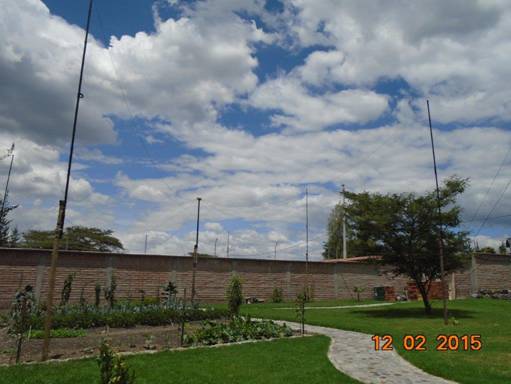
I modified one of my old switching boxes to accommodate the fourth position and carefully checked everything.
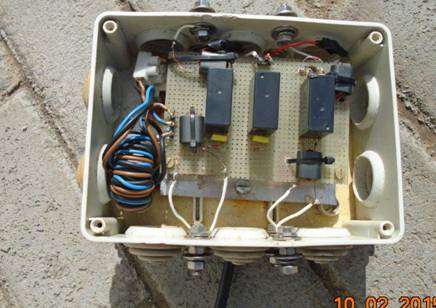
Before rising the pennants in the final position I tested the system from the shack with the AEA CIA analyzer and it was evident something wrong.
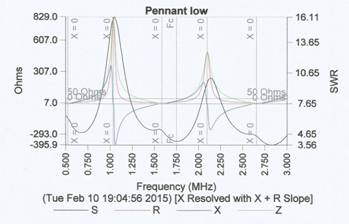
Checking at the base, the antennas were switching and working correctly, so the issue was in the feed line and found the culprit in a buried common noise choke connector. I changed it with a new one, wound on the new FT140-31core.

This is the analyzer graph showing the correct impedance of one of the pennants.
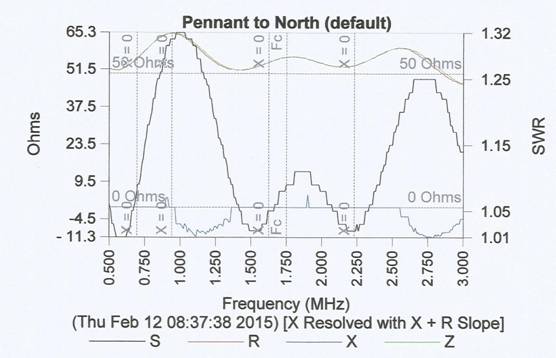
This is the central box at 4 m. height. All the system has been raised above the brick wall and the electric fence.
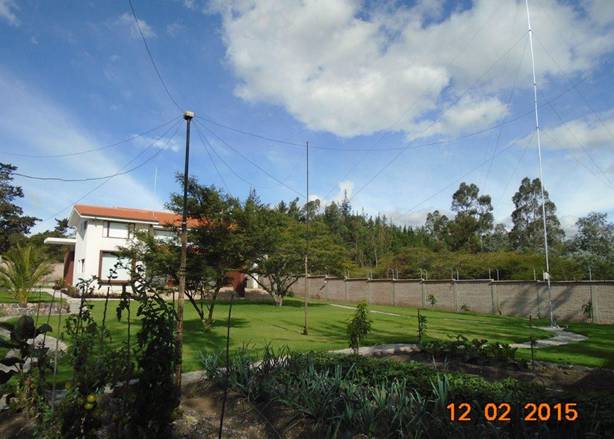
This picture shows the TX antenna and its FCP counterpoise, which is only 10 meters long and thus, does not interfere too much with the pennants as the ¼ elevated radials had done.
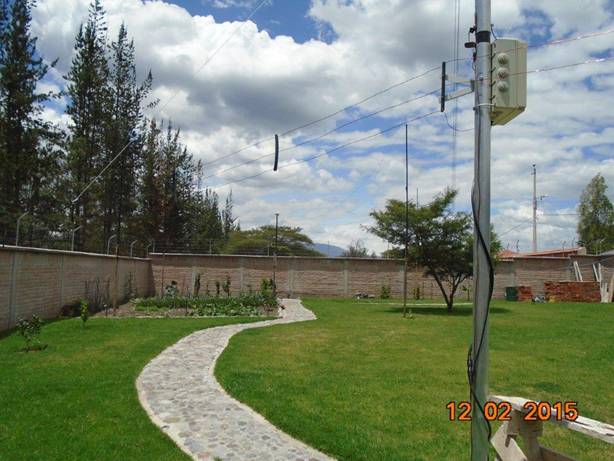
Anyway these pennants perform exactly as well as the rotatable flag: no difference by switching them or turning the other ….so next plans is to take them down and substitute with an horizontal loop. As demonstrated by the performance of the “long” inverted L my signal couples well with the ionosphere at high angles, so it would be worth trying a high angle antenna also on reception.
Quito, February 15, 2015 Luis HC1PF ex IV3PRK
